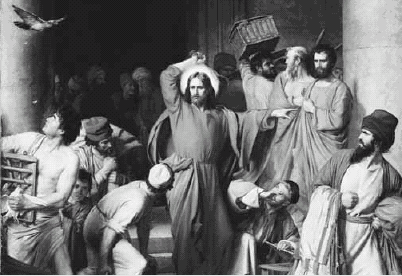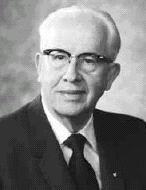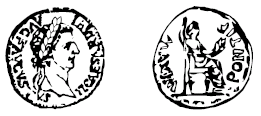Matthew 21-22: A Final Witness in Jerusalem
New Testament: Student Study guide, (2003), 29–31
Jesus knew that His mortal mission was about to end (see Matthew 20:17–19). Before He died, however, He provided the Jewish leaders of that day with additional witnesses that He truly was the Messiah promised by the holy prophets since the beginning. As you read Matthew 21–22, look for the many different testimonies Jesus gave Jewish leaders. These included the fulfillment of prophecy, His own teachings and testimony, and the testimony of many others—including those who shouted “Hosanna” to their King as He entered Jerusalem. Matthew 21 begins the last week of the Savior’s mortal life.
Other Accounts of What You Read in Matthew 21–22
Understanding the Scriptures
Matthew 21
| Drew nigh (v. 1) | Came near | |
| Ought (v. 3) | Anything | |
| Hosanna (vv. 9, 15) | Save now! (This was a shout of praise the people used to say they knew Jesus was the Messiah and could save them.) | |
| Sucklings (v. 16) | Babies | |
| Withered away (vv. 19–20) | Began dying | |
| Whether of them twain (v. 31) | Which of the two | |
| Hedged it round about (v. 33) | Put a fence around it | |
| Let it out (v. 33) | Rented it | |
| Husbandmen (vv. 33–35, 38, 40–41) | Farmers | |
| Seize on his inheritance (v. 38) | Possess what the owner or father owned | |
| Render (v. 41) | Provide | |
| Perceived (v. 45) | Understood, realized |
Matthew 21:1–11—What Is the Significance of Jesus Riding into Jerusalem on an Ass (Donkey)?
The prophet Zechariah taught that the Jews could recognize their Messiah when He rode into Jerusalem on the colt of a donkey (see Zechariah 9:9; Matthew 21:4–5). Israelite royalty traditionally rode on the colt of a donkey (see Judges 5:10; 10:4; 12:14; 2 Samuel 16:1–2; 1 Kings 1:33). Thus when Jesus came into Jerusalem on the colt of a donkey He was coming as the king of Israel, the Messiah, in fulfillment of prophecy.
Matthew 21:12–13—Why Were People Buying, Selling, and Changing Money in the Temple?

The events of Matthew 21 occurred during the week of Passover. During that week, Jews from many nations came to the temple to worship and offer sacrifices. At that time animals to be used for sacrifice could be purchased and foreign money exchanged for the ease of the travelers. The Savior objected to this business for two reasons: It was done in the Lord’s house and it was operated as a “den of thieves.”
Matthew 21:19–20—The Cursed Fig Tree
See “Understanding the Scriptures” for Mark 11:12–14, 20–21 (p. 48).
Matthew 22
| Bidden (vv. 3–4, 8) | Invited | |
| Fatlings (v. 4) | Animals for sacrifice | |
| Remnant (v. 6) | Those remaining | |
| Entreated them spitefully, and slew them (v. 6) | Treated them badly, and killed them | |
| Entangle him in his talk (v. 15) | Get him to say the wrong thing | |
| Lawful (v. 17) | Right | |
| Tribute (vv. 17, 19) | Taxes | |
| Image (v. 20) | Picture or likeness | |
| Superscription (v. 20) | Words inscribed on the coin | |
| Render (v. 21) | Give | |
| Raise up seed (v. 24) | Have children | |
| Issue (v. 25) | Children |
Matthew 22:11–14—The Man without a “Wedding Garment”
Understanding one of the customs of Jesus’ time helps us understand why the man who did not wear the wedding garment was treated as he was. “It was well known that one had to be suitably dressed to appear before a king. The apparel of the guest was a reflection of respect for the host. It was also commonly understood that the appropriate dress for such an occasion would be white robes. Apparently the people invited from the highways of the earth would have neither time nor means to procure the appropriate wedding clothing, so the king supplied his guests from his own wardrobe, a common practice. Thus all had been invited to clothe themselves in the garments of royalty. The man cast out had chosen to trust his own dress rather than that provided by the king” (Joseph F. McConkie, “Triumphal Entry and a Day of Debate,” in Studies in Scripture: Volume 5, The Gospels, ed. Kent P. Jackson and Robert L. Millet [1986], 381). The improperly dressed man in this parable was a symbol for the Jewish leaders who felt they could enter God’s kingdom without putting on the robes of righteousness that God requires (see Revelation 19:7–8).
Matthew 22:23–32—Marriage in the Resurrection
See “Understanding the Scriptures” for Luke 20:27–38 (p. 70).
Matthew 22:36–38—“The First and Great Commandment”

President Ezra Taft Benson spoke of the importance of putting the Lord first in our lives. He counseled: “When we put God first, all other things fall into their proper place or drop out of our lives. Our love of the Lord will govern the claims for our affection, the demands on our time, the interests we pursue, and the order of our priorities” (in Conference Report, Apr. 1988, 3; or Ensign, May 1988, 4).
Studying the Scriptures
Do two of the following activities (A–D) as you study Matthew 21–22.
 Make Comparisons
Make Comparisons
Most of the stories and parables in Matthew 21–22 were directed toward Jewish leaders in Jerusalem who tried to make Jesus look bad and themselves look good to all the people gathered for the Passover. The way Jesus responded caused the opposite to happen. From what you have learned in the New Testament and the help given in the “Understanding the Scriptures” section above, how were the Jewish leaders like:
- 1.The fig tree in Matthew 21:17–20?
- 2.The second son in Matthew 21:28–32?
- 3.The husbandmen in Matthew 21:33–41?
- 4.The wedding guests and the man without the wedding garment in Matthew 22:1–14?
 Many Witnesses and Much Evidence
Many Witnesses and Much Evidence
Imagine that you are a believer in Christ at the time of the events in Matthew 21–22. You have a friend who is a Pharisee. Write a letter to him, using the testimonies and evidence given in Matthew 21–22, to try to help him understand that Jesus really is the promised Messiah, the Christ. You should include at least three different events that happened in these chapters as part of your letter. Some of the more helpful passages are Matthew 21:1–11, 12–16, 23–27 and 22:15–33, 41–46.
 Paying Taxes
Paying Taxes
One of the ways the Pharisees thought they could make Jesus look bad was to ask Him about whether the Jews should pay taxes to the Romans. The account is recorded in Matthew 22:15–22. If Jesus said that it was right to pay taxes, then the Pharisees could accuse Him of being a supporter of Rome—whom the Jews hated. If Jesus said that the Jews should not pay taxes to Rome, then the Pharisees could report Jesus to the Roman authorities as a rebel against the government.
- 1.How did Jesus answer their question?
- 2.The money had Caesar’s image on it. What has God’s image in it (see Genesis 1:26–27) and what are we to “render” (give) to God?

DENARIUS (penny) OF TIBERIUS
 The Two Great Commandments
The Two Great Commandments
- 1.According to Matthew 22:35–40, what did Jesus say are the two great commandments?
- 2.List five important teachings of the gospel and tell how each one of them is related to one or both of these two great commandments or list five other commandments that would be automatically kept if you obeyed these two “great” ones, and explain why.
- 3.Write a thoughtful answer to one of the following questions:
- •How can you show love for God with all of your heart, soul, and mind each day?
- •Why do you think the first great commandment must come before the second? What do you think would be wrong if the second commandment came first?
- •What does it mean to love your neighbor as yourself?

No comments:
Post a Comment